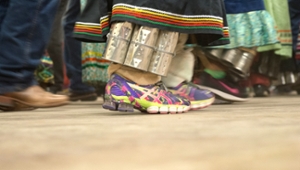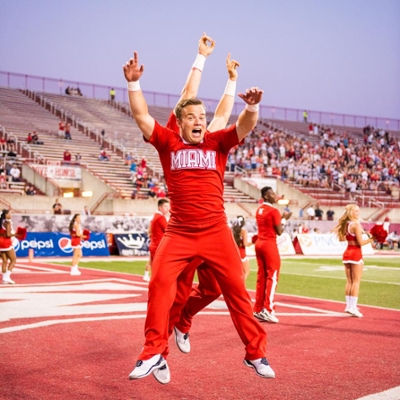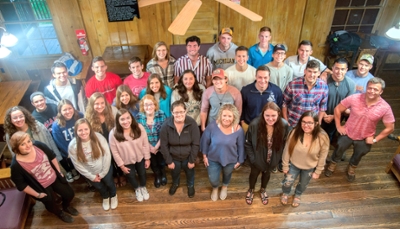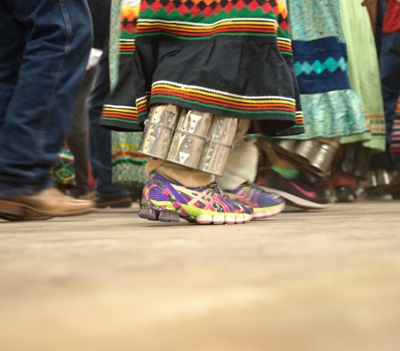Myaamia Students apply technical education to cultural challenges


The Myaamia Heritage Logo symbolizing the
relationship between the University and Tribe. Each
piece represents an integral part of the relationship.
Miami University and the Miami Tribe of Oklahoma have a long history together. In fact, the university takes its name from the tribe and their historic homelands included the area surrounding Oxford, Ohio.
However, it wasn’t until Chief Forest Olds visited the Miami campus for the first time in 1972 that the foundation of the current Miami University-Miami Tribe partnership was laid.
Since 1991, one-hundred and twenty-one Miami Tribe students have enrolled at Miami University, and the Myaamia Project (now the Myaamia Center) was created in 2001. The Myaamia Center conducts research to help preserve the Myaamia language and culture, involving Miami University students from all backgrounds to help in these efforts.

Trevor Hayes, a senior mechanical engineering
major, has been a Miami University cheerleader
since his freshman year
Becoming a Miami University Redhawk
Seniors Evan Strack (manufacturing engineering), JT Goulding (software engineering), and Trevor Hayes (manufacturing engineering) are three Myaamia students within the College of Engineering and Computing.
Strack is the third in his family to attend Miami University, after his two older brothers, Andrew and Anthony. The Kendallville, Indiana native had been visiting Oxford to see his brothers since he was eleven years old and it felt natural for him to attend Miami University as well.
“It was the best school with the best opportunities for me,” he said.
Goulding, from Huntington, Indiana, had similar reasons for choosing Miami University. He remembered that the Miami Tribe was always invested in his education, sending his family school supplies when he was in elementary school. Two of his cousins came to Miami University, and it just made sense to him to enroll here.
Hayes—who grew up close to the Miami Tribe headquarters in Miami, Oklahoma—cited the ongoing support of the Miami Tribe to its students at Miami University as being crucial to helping him pursue his dream of becoming an engineer here in Oxford.

The thirty-one Miami Tribe students enrolled at Miami
University during the Fall 2017 semester
Learning about themselves and each other
Currently, thirty-one Myaamia students are enrolled at Miami University.
All Myaamia students take a one-credit hour Myaamia heritage class per semester for three years. Each year a different topic related to their culture or history is explored. These topics include contemporary issues for the tribe, the ecology of their lands over time, and the Myaamia language.
In their fourth year, students complete a senior project in which they interweave their culture and history with their major discipline.
Combining engineering and community
For their senior projects, the three Myaamia engineering students each chose to apply their engineering discipline to different problems they saw effecting the Myaamia community.

An example of a woman wearing Shaker cans
during the Miami Tribe’s Stomp Dance
Evan Strack noticed that during the Miami Tribe stomp dance, the leg shakers women wore when they danced were heavy and hard to take on and off. These shakers are usually made out of evaporated milk cans with pebbles or beans inside. Strack is redesigning these shakers to make them more comfortable for the dancers, while preserving their general look and sound.
Hayes is applying his discipline to another aspect of Myaamia culture. Lacrosse—now popular around the world—originated approximately 900 hundred years ago in North America and became part of the culture of many North American Tribes. Hayes is applying the skills he’s learned at Miami University to the sport. Specifically, he wants to apply modern manufacturing techniques to make lacrosse equipment more cheaply and efficiently.
JT Goulding is tackling a different kind of problem—one of Miami Tribe representation in popular culture. In the video game Europa Universalis IV players can play as many nations around the world—trading, warring, and colonizing. Goulding, who wishes to start a career in the video game industry, feels that the North American tribes included in this game (including the Miami Tribe) are inaccurately portrayed. He is researching the true history and inter-tribal relations of American tribes and plans to create a mod for more realistic gameplay.
All three of these students will research and develop their projects for the rest of the school year, with deliverables expected in early May.
By Paige Smith

